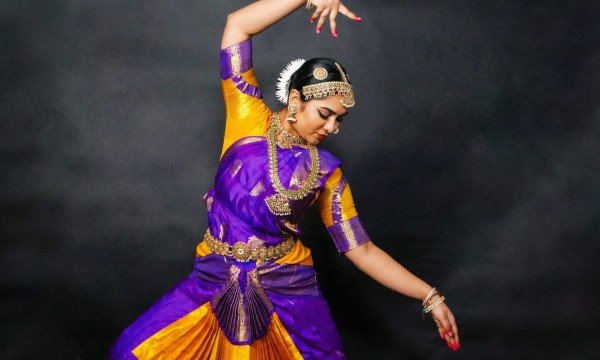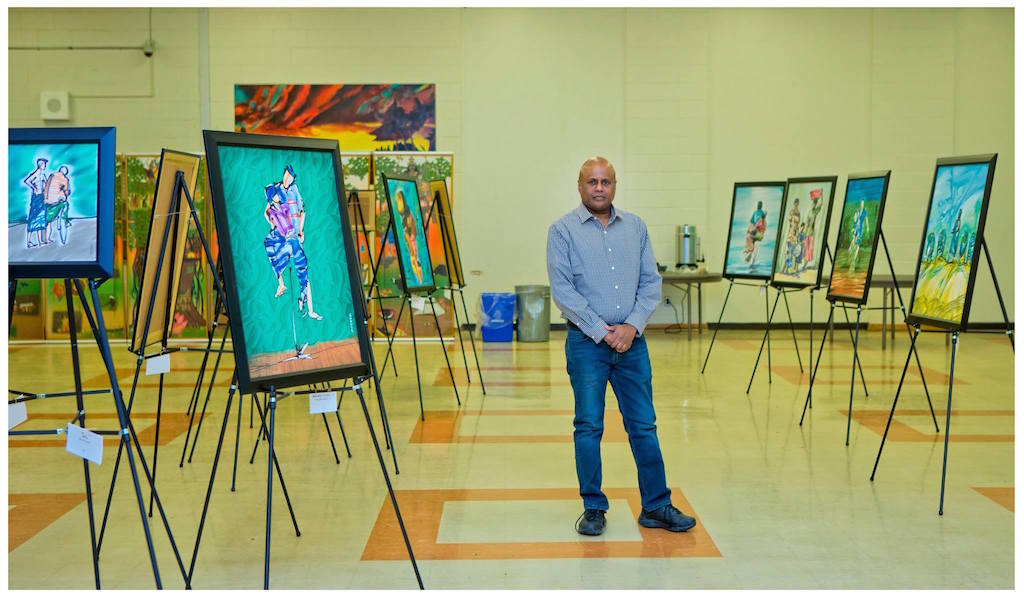
A conversation with Karuna Vincent inevitably turns to other artists; it’s almost impossible to keep him talking about himself. He would rather talk about art. “What has survived prehistoric humans? Not their music, or dance, but their art.” He is most struck by Caravaggio and Rembrandt, their use of light and shadow, and speaks lovingly of the light that seems to pour out of a small window in Abraham and Isaac, and in Nightwatch; how it illuminates life in the midst of darkness. “You can choose the subject, or its themes, but in the end, it is the light that directs the painting.” After our conversation, I pore over images of these paintings, my eye tracing the light.
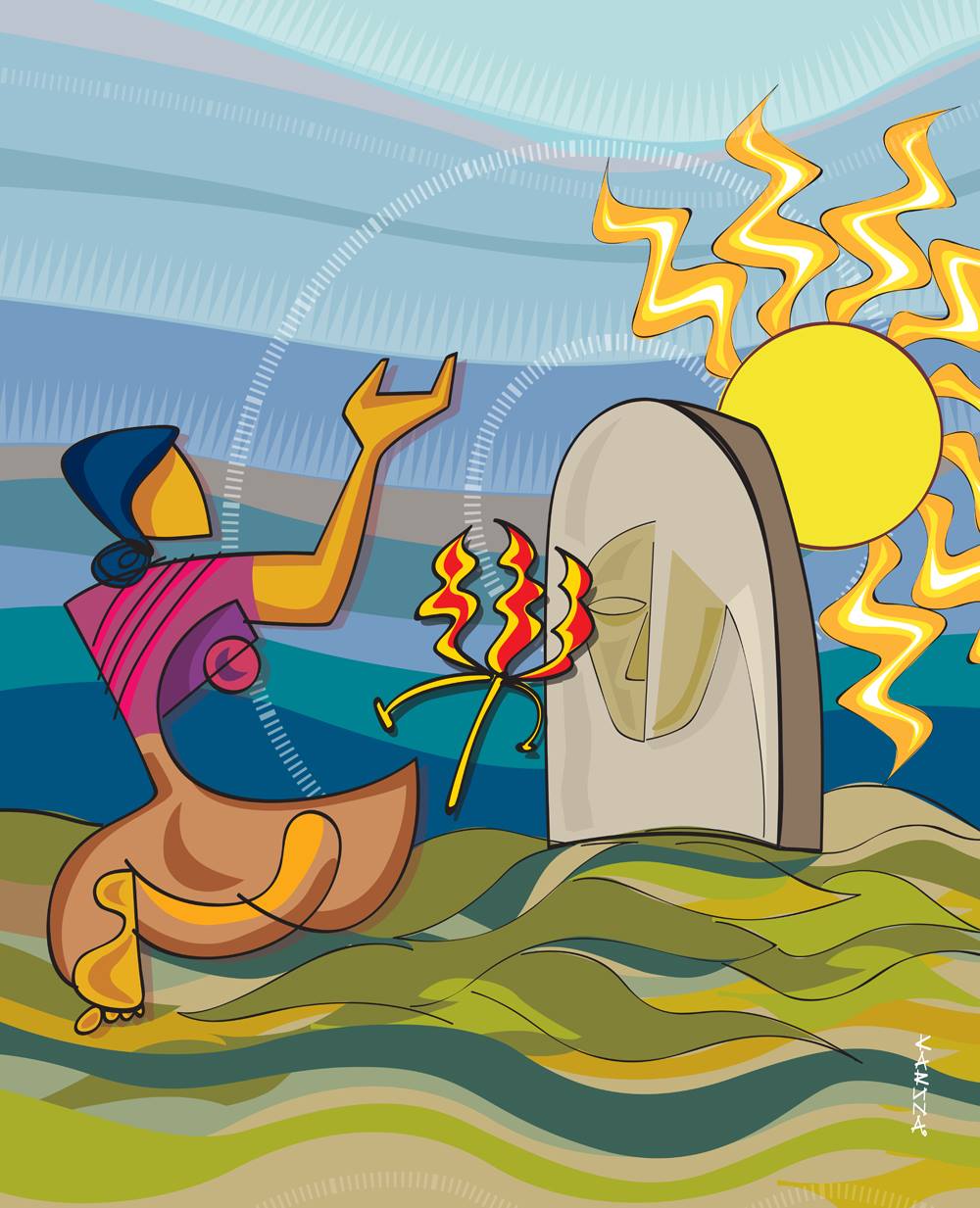
I ask Karuna if he had always been intrigued by art. “My mother was interested in art,” he explains, “and all the women in my family drew very well. Art was very much a part of our household, but I was born in Karaveddy (near Point Pedro), and there were going to be limits to what I could do with my art there.” His fascination with art grew into a fondness for comic books, and in the Sixth Grade at Hartley College, Karuna and some of his friends released six hand-drawn issues of comic books, drawn in unruled blank-page books, which circulated the entire school. His parents encouraged his interest until a childhood bout with Eosinophilia kept him from school. As Karuna became more fixed on drawing, unable to focus on reading, his parents took his materials away from him, afraid that he would never show interest in his studies again.
In 1989, Karuna became a student of the renowned Jaffna artist A. Mark, himself a former student of George Keyt’s. Raised in a Catholic family, Karuna’s earliest exposure to art was through religious iconography, but Mark introduced him to many of the artists who would influence his work: French Surrealist Andre Breton, the stylized paintings and freehand techniques of Jamini Roy, George Keyt and the abstract explorations of Trotsky Maruthu. Mark urged him to go out and draw people from real life, rather than from the idealized figures in popular culture magazines of the time. “It’s a shadeist, idealized form that had been normalized from Ravi Varma on,” Karuna says. “The images were almost pink in color, no brown skin or dark skin, and the forms of men and women conformed to a model, rather than reality. Mark drove us to mirror society rather than chase some dream image.” Here, the art of Maruthu, Amrita Sher-Gil, Adimoolam and others were a source of inspiration, focusing as they did on more realistic depictions of South Asian bodies in all their physical variations and rich skin tones.
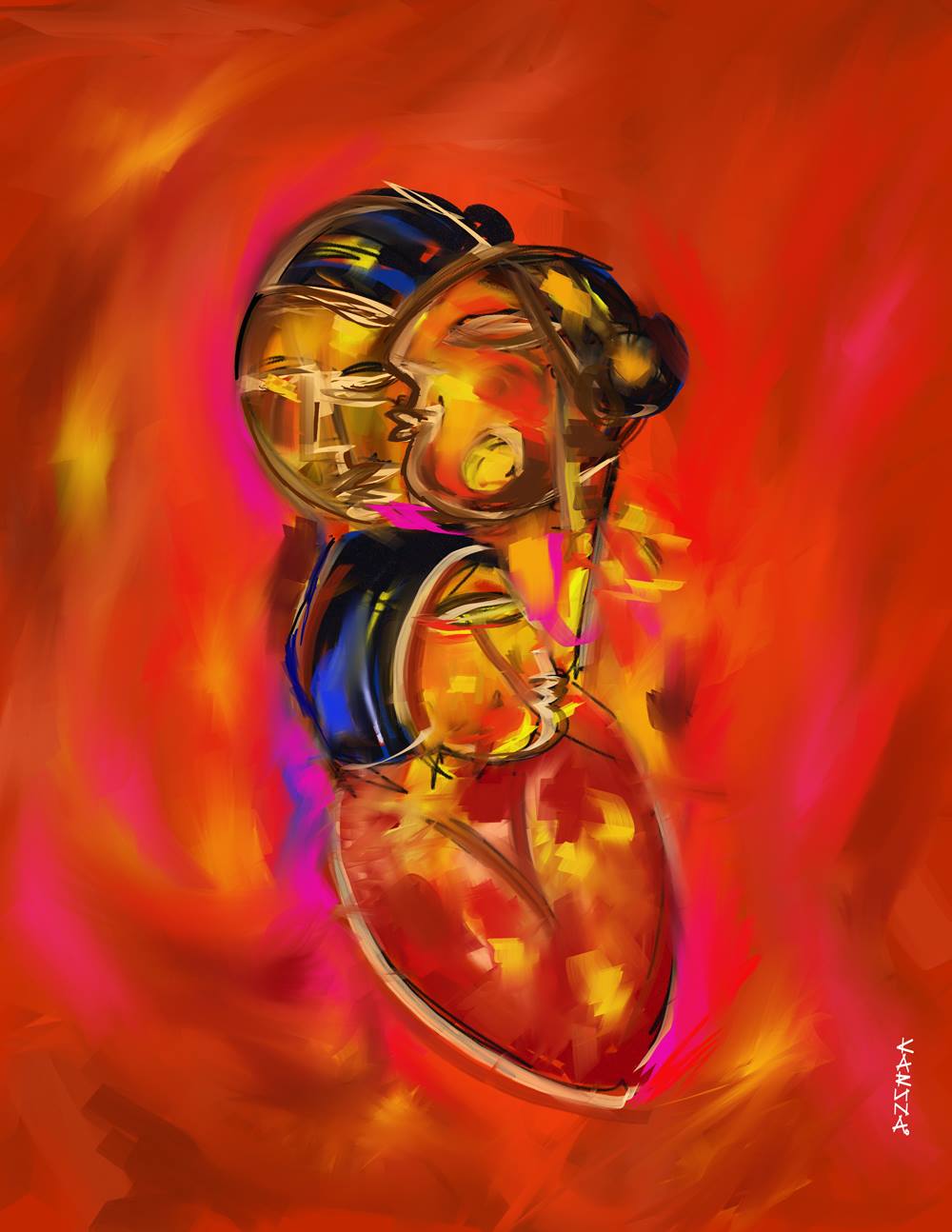
Fleeing the conflict in Sri Lanka, Karuna arrived in Canada as a refugee in 1991. I ask him how that change affected his art. “I lived in a small apartment with a family, and could no longer work with oils. I had no access to studio space, and the alcohol-based medium for diluting oil paints has a strong, toxic smell, so I couldn’t use it anymore; I moved to pastels.” Like many refugees, he measures his misfortune against that of the ones left behind. “I eventually gained access to digital materials, after doing a Desktop Publishing Course at George Brown. I had more opportunities to pursue my art than others did back home.” He speaks animatedly about the mixed media techniques that a Wacom tablet allows, and how time and stylus pressure shape his digital work. Two years after his arrival in Canada he and the artist Jeevan were invited to hold a joint exhibition at the Tamil Resource Centre (Thedakam), for an event marking the 10th anniversary of the July riots in Colombo. He exhibited twenty oil paintings, and sold none of them.
Karuna is known as an illustrator of book covers, website designer, photographer and artist, but he doesn’t often sell his paintings.
“You rarely find a work of art by a Tamil artist in someone’s house. Art doesn’t have the same recognition as music or dance – even among the cultured, you will have hundreds of books of poetry and essays, but rarely books on visual art or even writing on visual arts.”
Some of this attitude he attributes to a Eurocentric education that does not recognize or understand art from other cultures, some of it to a cultural block on visual art as a field. “People will spend thousands of dollars sending their child to music or dance classes, and to have an Arangetram, even if that child never pursues dance beyond that point. Visual art doesn’t seem to hold the same value, even though the skills of observation, internalizing a subject and externalizing it onto a canvas open out a world of possibilities. Those skills could take you into theatre, architecture, video game design, graphic design, landscaping, interiors… the possibilities are numerous! Yet, parents tell their kids ‘What are you going to do with art?’ Denying children art closes off so many options to them.”
Karuna’s series of bicycle sketches, alongside more abstract paintings, created quite a stir at a much overdue exhibit recognizing his work at the Tamil Heritage events this past January. I walked into the exhibit to find people pointing to different sketches and speaking about them as if they were family photographs. I listen to the responses:
“This one hurts to look at.”“This is why we had to leave…”
“I used to take love letters to my wife just like this.”
“People could go three or four on a bike…”
I ask him why bicycle sketches? What inspired this?
“I wanted to experiment with these sketches, I hadn’t seen anything like it done before. The lane I grew up on was quite close to a junction, and many people on bicycles met there. It’s a vanishing lifestyle. Back then, to take a girl ‘double’ on your bike was the most intimate you could get. Even when you talked to a girl you had to keep some distance. And that culture of writing and delivering love letters, the excitement, these are lost now.” Yet, it’s a culture that has some resonance across age and place. A Cuban friend tells me the bicycle sketches remind him of home. A woman from a West African village he has never heard of tells Karuna the sketches took her back to her childhood. An elderly Tamil gentleman calls him out of the blue to thank him for depicting these memories.
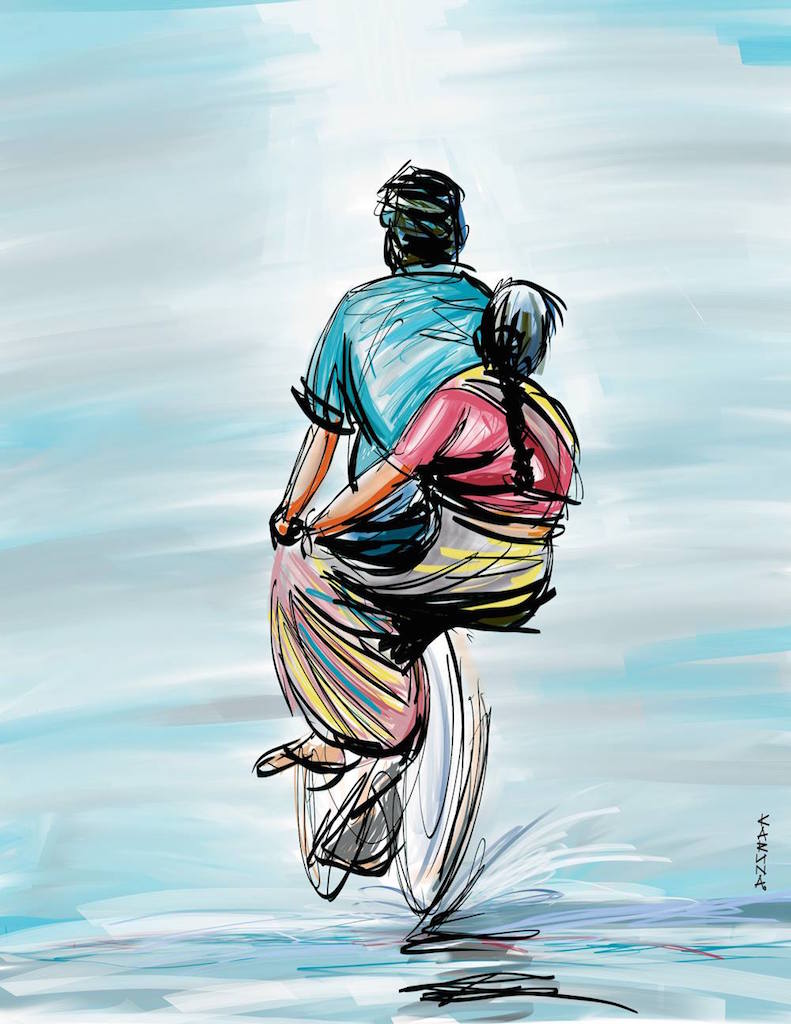
As I gaze at the sketches, I overhear a man tell of how one brings back memories of taking a girl ‘double’ on his bike. I smile at him, and he includes me, “That was serious stuff. You had to be ready to marry a girl if she rode double on your bike.”
“And did you marry the girl you took on your bike?” I ask him. His friend burst into laughter, “Oh, she really put you on the spot with that question!”
The man laughed too, only slightly indignant, “I have only taken one woman on my bike, and that was after I married her!” The laughter sparkles in the room, and lingers with me as I walk away.
I realize that these works unlock something profound for our community. Many who came here as refugees don’t have photographs to document their stories, and so many memories remain unspoken. They are compelled to speak about war, but that’s not all their lives were about. In Karuna’s art, their memories find a voice, and it lifts them out of their everyday. They remember their loves, their struggles, their thrills, their pain, and the communities they were once part of. In remembering, they relive them. And, however briefly, they are home again.
Images: Provided by Karuna Vincent.
Coming Soon! TC MRKT will connect Tamil sellers with buyers thorough storytelling. Stay in the loop by registering here.







